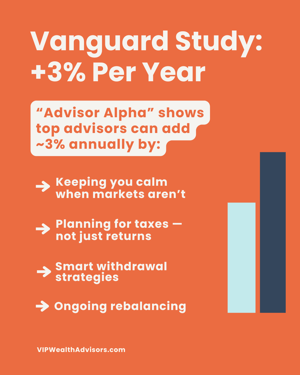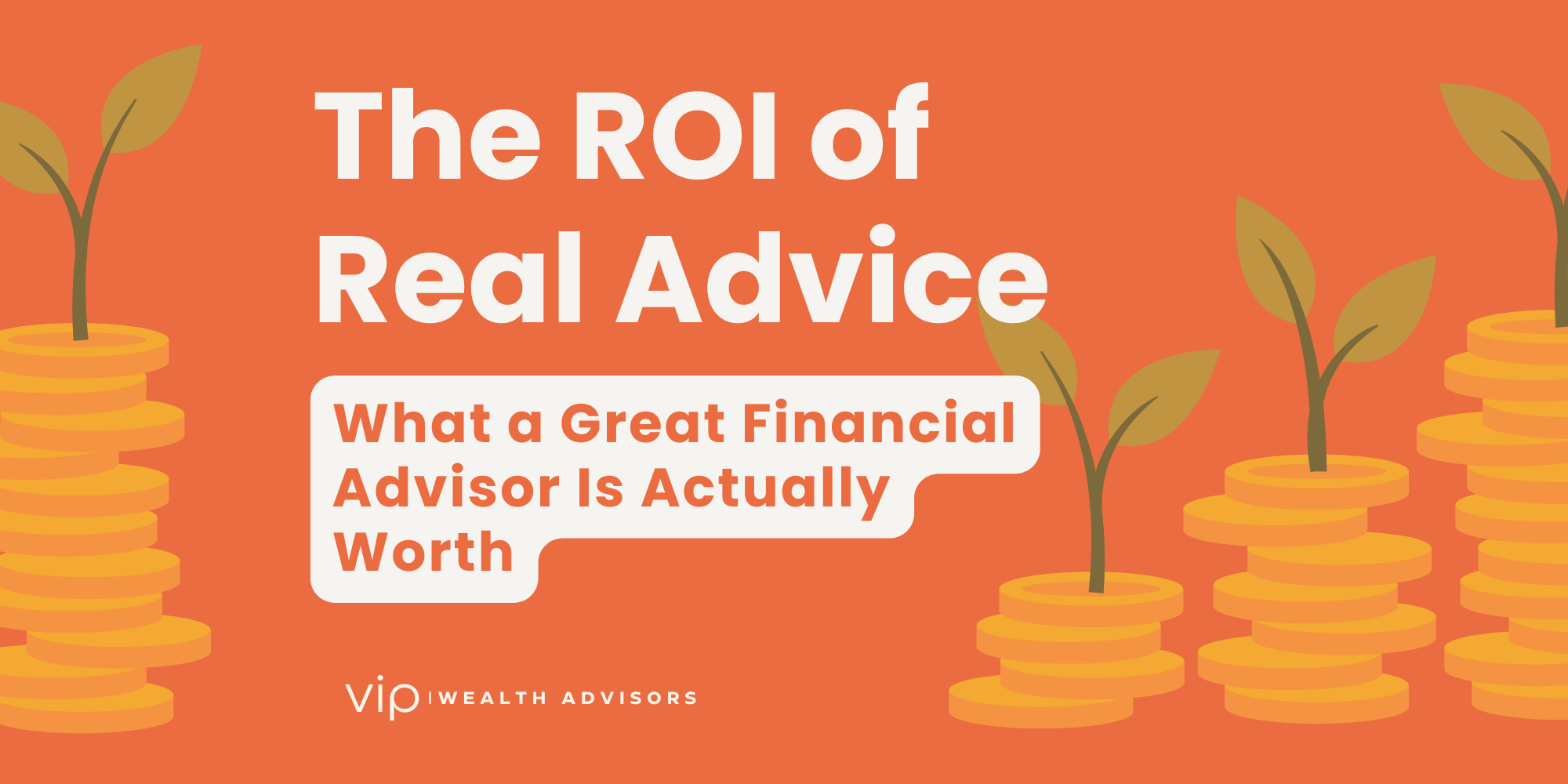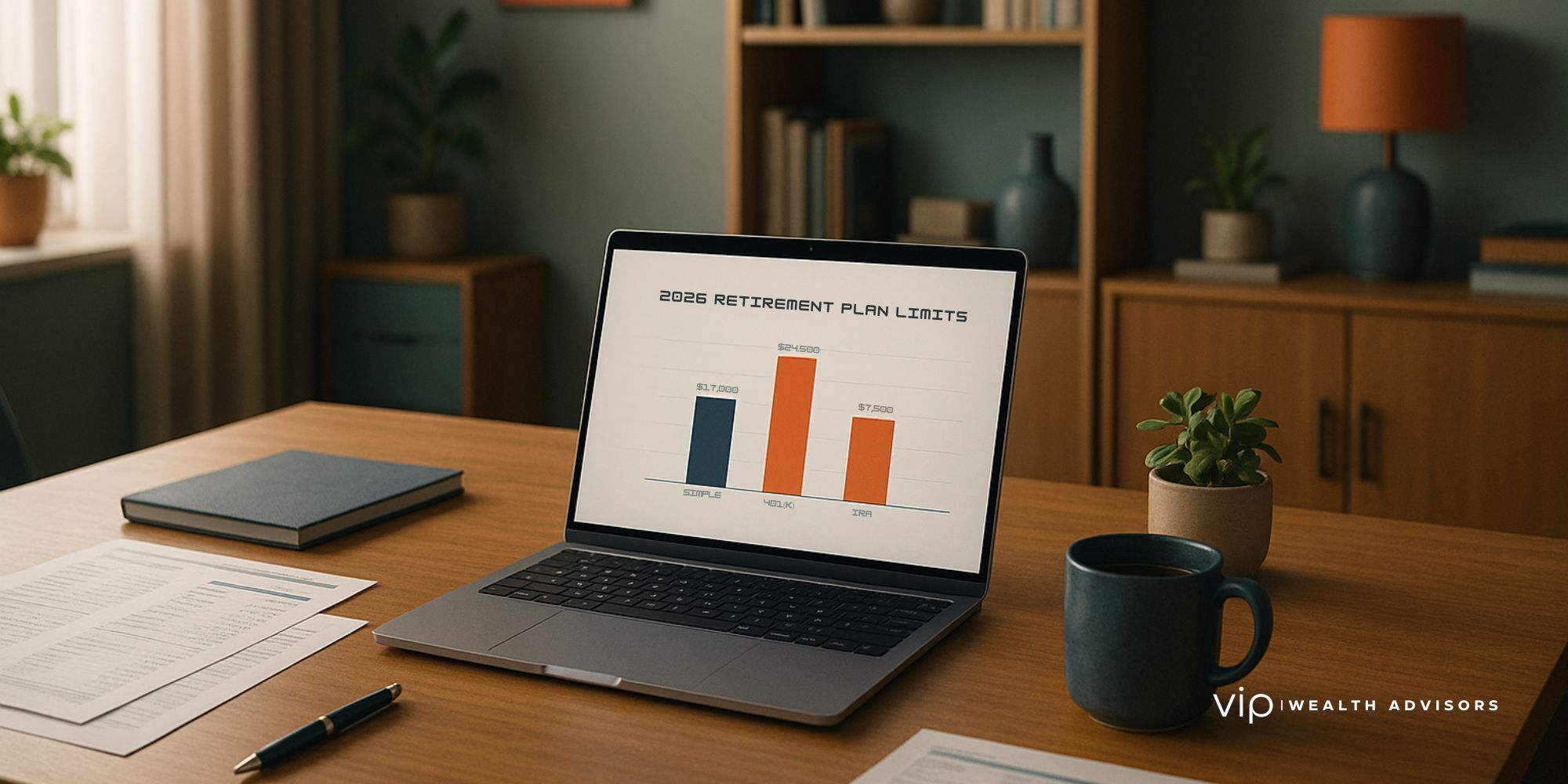Introduction: Is a Financial Advisor Worth It?
If you're a high-income earner, business owner, or someone with complex financial needs, you've probably asked:
"Is it worth paying a financial advisor thousands of dollars a year?"
Here's the truth: With the right advisor, the return on investment (ROI) is not only measurable but also substantial. Studies show that high-value financial advice can add 3–5% annually to your long-term returns, not just in your portfolio but across your entire financial life.
This article breaks down exactly why working with a flat-fee, tax-savvy, boutique advisor is often the smartest money move you'll make — and how traditional advisory models fall short.
Not All Financial Advisors Are Created Equal
The financial services industry has a dirty secret: Most advisors are overburdened and underdelivering.
At many firms, especially those with flashy marketing and VC funding, a single advisor may be assigned to 175 to 250 clients or more. These firms often run on a "factory model," built for scale — not personalization.
The result? Cookie-cutter financial plans, poor communication, reactive service, and little-to-no tax coordination.
The Flat-Fee, White-Glove Alternative
Contrast that with a boutique flat-fee advisor who caps their practice at ~55 households. Here's what that relationship looks like:
- Transparent pricing not tied to your asset levels
- Annual tax preparation and integrated tax planning
- Equity compensation strategy for RSUs, ISOs, and ESPPs
- Ongoing planning, not just yearly reviews
- Proactive communication — not just when you call
When you're paying a flat annual fee based on complexity, not portfolio size, the value becomes clear:
| Portfolio | 1% AUM Fee | Flat-Fee Equivalent |
|---|---|---|
| $1M | $10,000 | $10,000 |
| $2M | $20,000 | $10,000 - $15,000 |
| $3M | $30,000 | $15,000 - $20,000 |
📊 You get more service — and more savings — for less.
The ROI of Real Advice: Advisor Alpha in Action

Vanguard: Advisor Alpha Adds 3%
Vanguard's study on "Advisor Alpha" found that great advisors can add about 3% in net annual value through:
- Behavioral coaching
- Tax-efficient strategies
- Withdrawal optimization
- Rebalancing
Russell Investments: Nearly 5% Added Annually
Russell Investments estimates that a financial advisor can add 4.91% annually, factoring in:
- Customized planning
- Tax loss harvesting
- Avoiding emotional decisions
Multiply those gains over 10–20 years, and the compounding impact is massive — well beyond the cost of a quality advisor.
The True Cost of AUM Fees
Most advisors still charge a percentage of assets under management (AUM). The problem? As your wealth grows, so does your fee — whether or not your service improves.
A $2.5M portfolio at a 1% fee = $25,000/year. Yet you may receive:
- No tax return prep
- Surface-level investment advice
- Little help with equity comp or business strategy
Flat-fee advisors decouple cost from assets, delivering consistent, comprehensive value regardless of market swings.
Hidden Fees: The Silent Portfolio Killer
Even if you're working with an advisor charging 1%, you may be paying another 1–1.5% in hidden costs within your investments:
- Mutual fund expense ratios often exceed 1%
- 12b-1 fees (marketing and distribution costs)
- Tax drag from poorly timed capital gains
Here's what the true cost often looks like:
| Investment Type | AUM Fee | Expense Ratio | Total Cost |
|---|---|---|---|
| Mutual Fund Portfolio | 1.00% | 1.25% | 2.25% |
| Flat-Fee + Low Cost ETFs | Flat $15,000 | 0.05% | ~0.60% |
On a $2.5M portfolio, that difference can save you $40,000+ per year.
Red Flags in Today’s Advice Landscape
Before hiring an advisor, ask:
- How many clients does each advisor manage?
- Do they prepare taxes or just "coordinate"?
- Are they responsive and proactive?
- Can they handle equity comp, small business planning, or high-net-worth tax complexity?
Be cautious of firms with advisor-client ratios above 100:1. These firms often include:
- Faceless tech portals
- Generic reports
- Delayed communication
- Advisors stretched far too thin to be strategic
The Real Value: Outcomes, Not Hours
When you hire a top-tier flat-fee advisor, you're not paying for time — you're paying for results:
- Smarter stock option decisions (ISOs, RSUs)
- Lower tax bills
- Coordinated estate and business planning
- Optimized charitable giving
- Better decision-making during volatility
The right advisor helps you avoid 6-figure mistakes — while adding long-term structure and confidence.
Final Thought: It's Not About Cost, It's About Value
Paying $10,000 to $20,000 per year may seem steep — until you realize that a smart advisor:
- Pays for themselves in tax savings
- Adds compounding value through better decisions
- Saves you from emotional mistakes
- Gives you peace of mind and time back
The best financial advice doesn't cost you money; it makes you money.
Ready to See What a Boutique Flat-Fee Advisor Can Do for You?
If you’re a high-income professional, equity-compensated executive, or business owner ready for deeper, smarter financial advice — let's talk.
Because real advice isn’t mass-produced; it’s tailored, proactive, and built around you.
View More Articles by Topic
- Taxes (70)
- Financial Planning (37)
- Equity Compensation (30)
- Investments (21)
- RSU (21)
- Tax Policy & Legislation (18)
- Business Owner Planning (14)
- Incentive Stock Options (14)
- Retirement (12)
- Real Estate (9)
- AMT (8)
- Psychology of Money (8)
- Alternative Investments (7)
- Pre-IPO Planning (7)
- Estate Planning (6)
- NSOs (6)
- The Boring Investment Strategy (6)
- Capital Gains Tax (5)
- Crypto (5)
- Fiduciary Standard (4)
- Post-IPO Tax Strategy (4)
- QSBS (4)
- 401(k) Strategy (3)
- Q&A (3)
- ETF Taxes (2)
- IRA Strategy (2)
- Irrevocable Trust (2)
- Market Insights (2)
- Market Timing (2)
- Private Investments (2)
- Stock Market (2)
- Video (2)
- AUM vs Flat Fee (1)
- Altruist (1)
- Atlanta (1)
- Book Review (1)
- Charitable Giving (1)
- Education Planning (1)
- International Financial Strategies (1)
- Legacy Wealth (1)
- QTIP Trust (1)
- Revocable Trust (1)
- Schwab (1)
- Solo 401k (1)
- Venture Capital (1)










